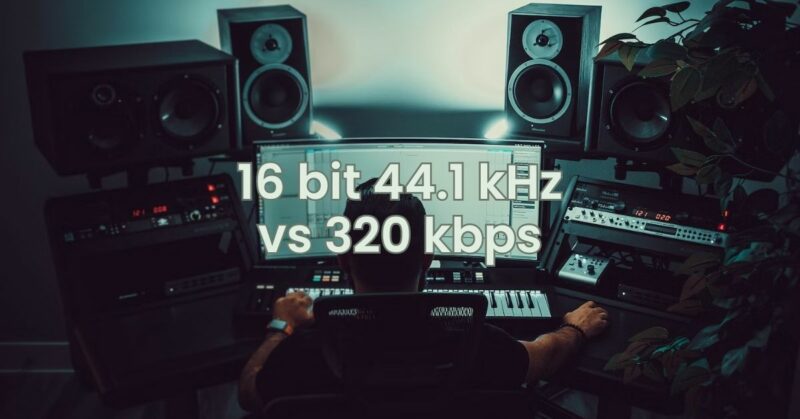When it comes to audio quality, there are two main factors to consider: the sample rate and the bit depth. The sample rate is the number of times per second that the audio signal is sampled, and the bit depth is the number of bits used to represent each sample.
16-bit 44.1 kHz audio is the standard audio format for CDs. It has a sample rate of 44,100 Hz and a bit depth of 16 bits. This means that each sample is represented by 16 bits of data, which can store a range of values from 0 to 65,535.
320 kbps audio is a higher-quality audio format that is often used for streaming and downloading music. It has a bit rate of 320,000 bits per second, which means that each second of audio is represented by 320,000 bits of data. This is significantly more data than 16-bit 44.1 kHz audio, which means that 320 kbps audio can store a wider range of frequencies and amplitudes.
In general, 320 kbps audio will sound better than 16-bit 44.1 kHz audio. However, the difference in sound quality may not be noticeable to everyone. If you have high-quality headphones or speakers, you may be able to hear the difference between the two formats. However, if you have lower-quality headphones or speakers, you may not be able to tell the difference.
Here is a table that summarizes the key differences between 16-bit 44.1 kHz and 320 kbps audio:
| Factor | 16-bit 44.1 kHz | 320 kbps |
|---|---|---|
| Sample rate | 44,100 Hz | 44,100 Hz |
| Bit depth | 16 bits | 32 bits |
| Bit rate | 1411 kbps | 320 kbps |
| Sound quality | Good | Better |
| Noticeable difference | Not always noticeable | May be noticeable with high-quality headphones or speakers |
Ultimately, the best way to decide which audio format is right for you is to try both and see which one you prefer.


